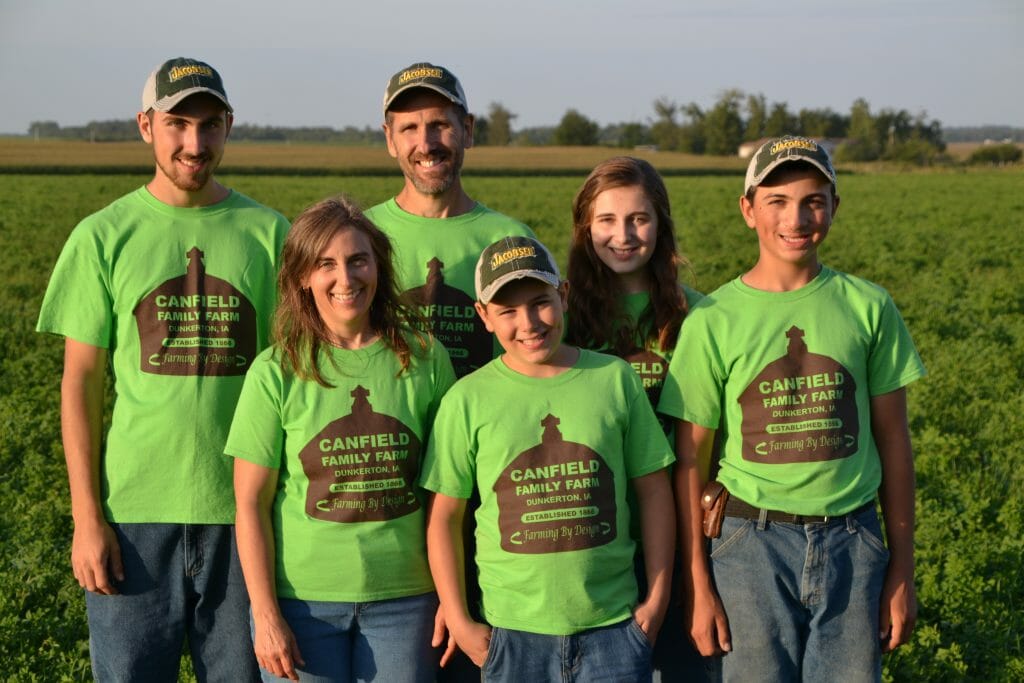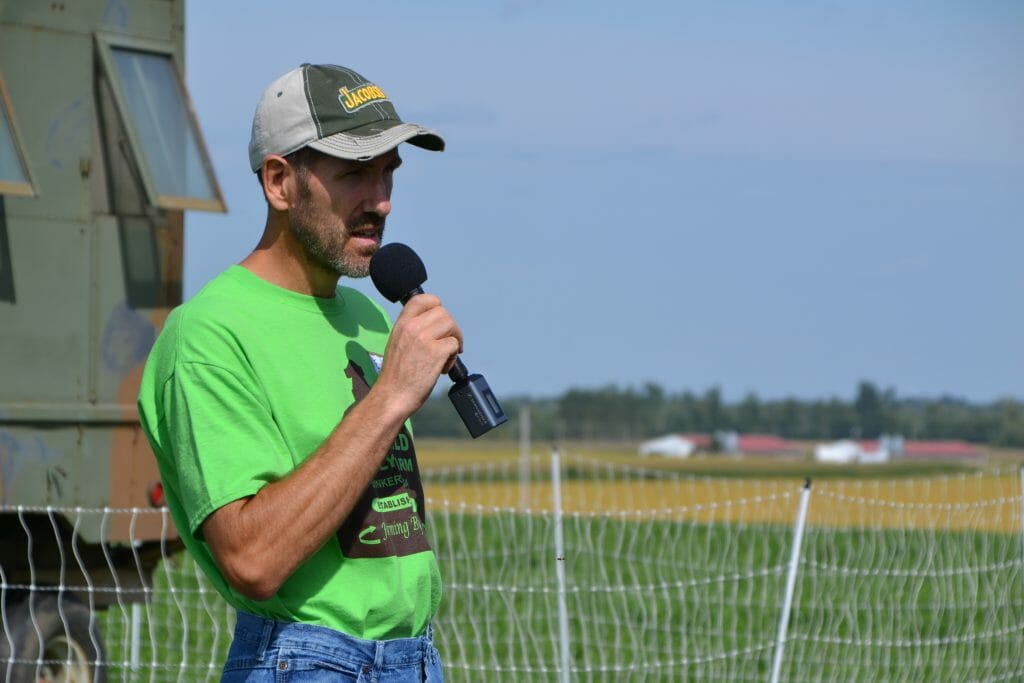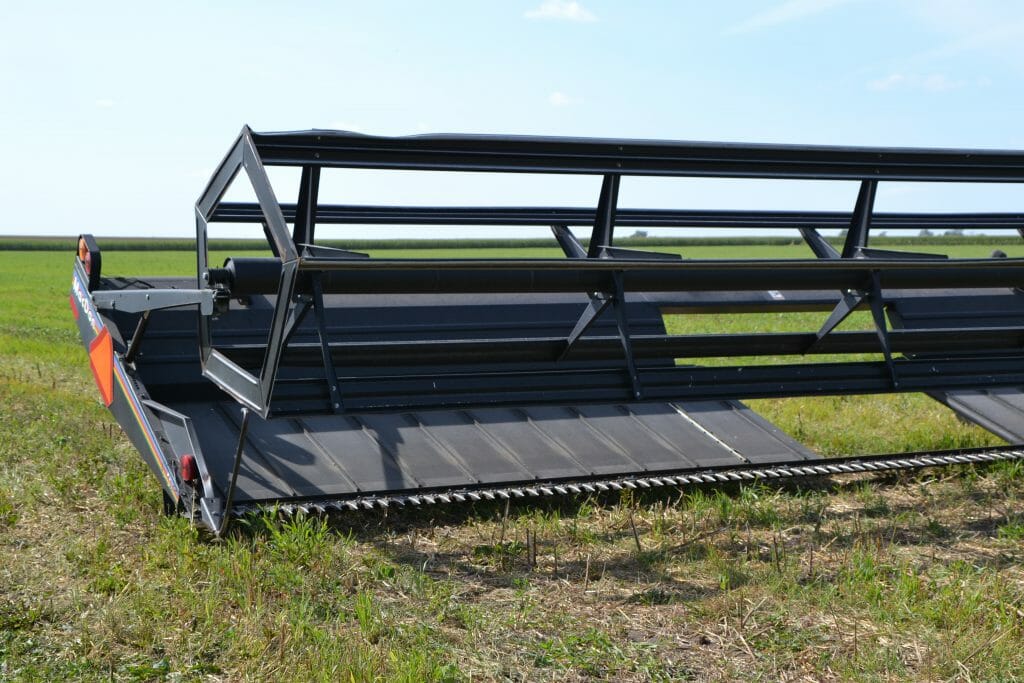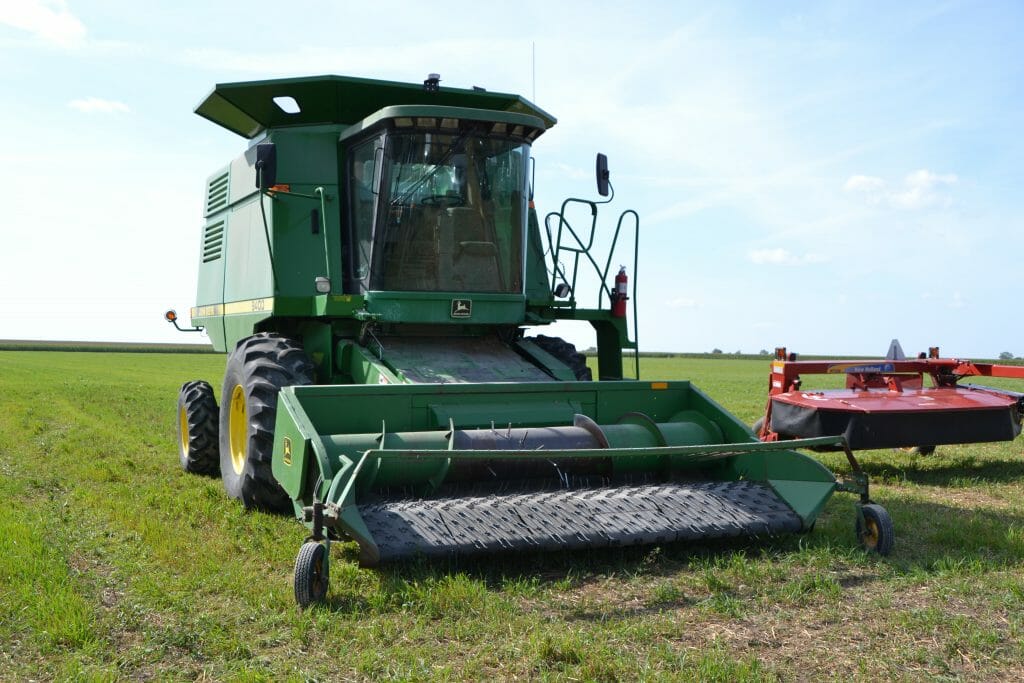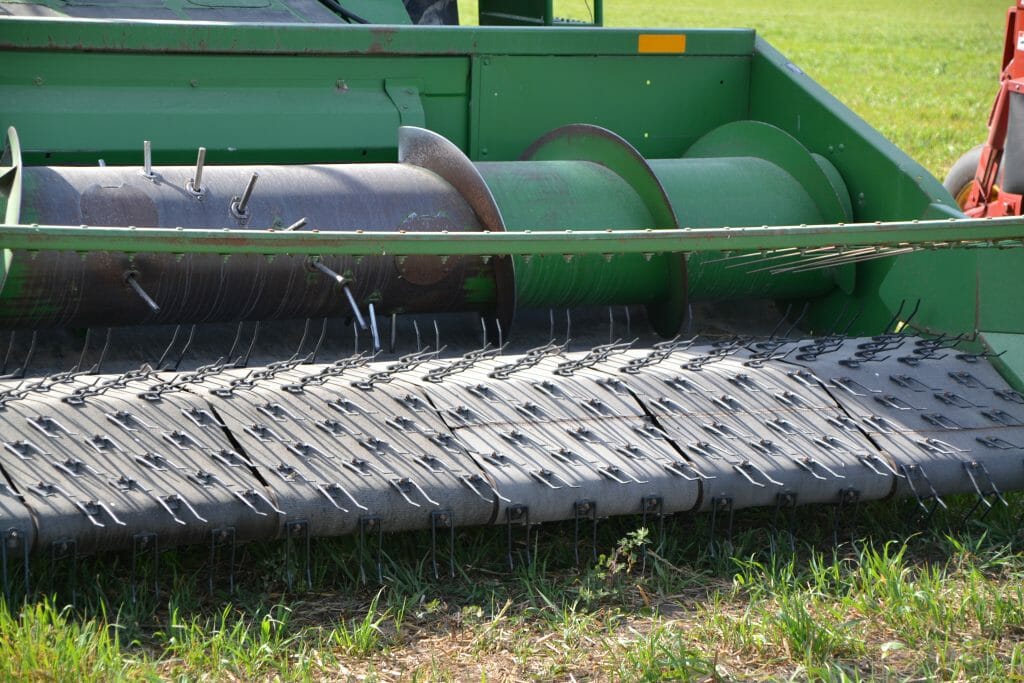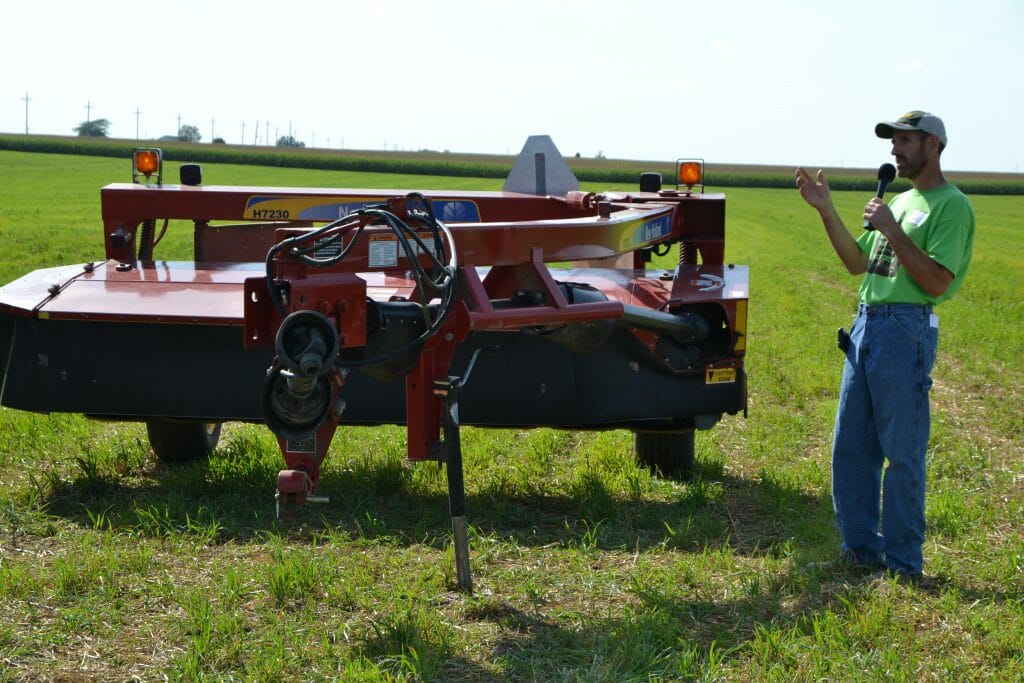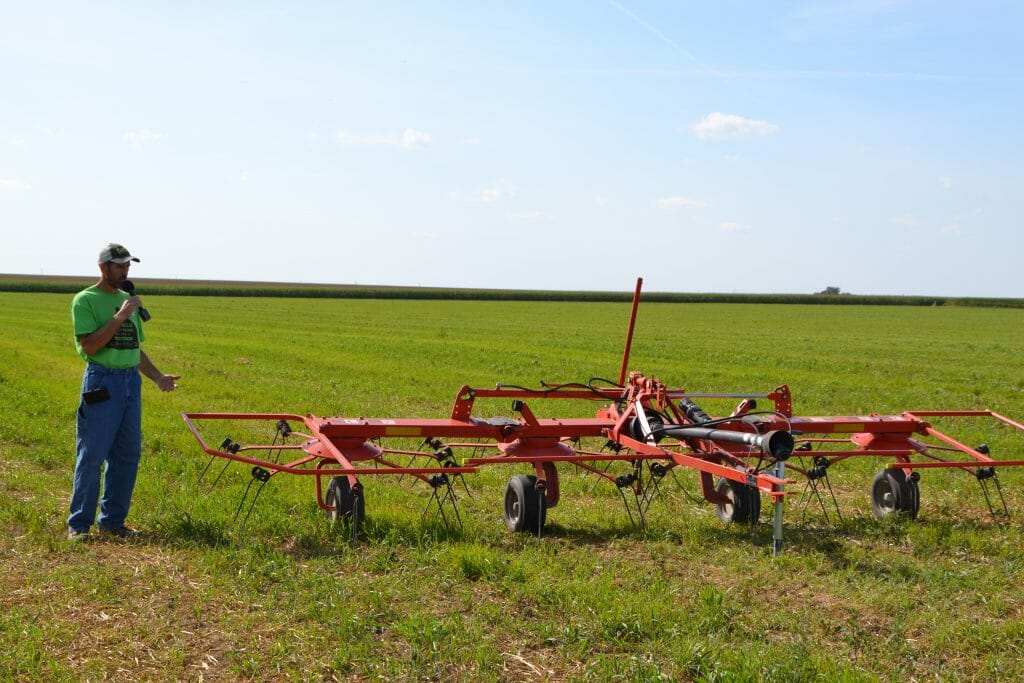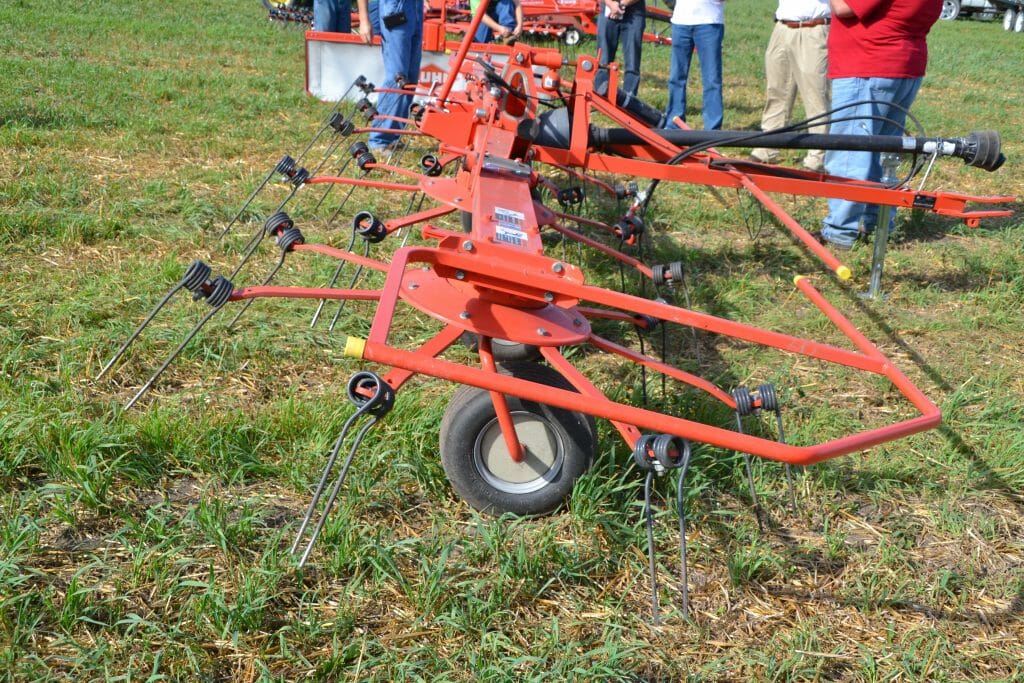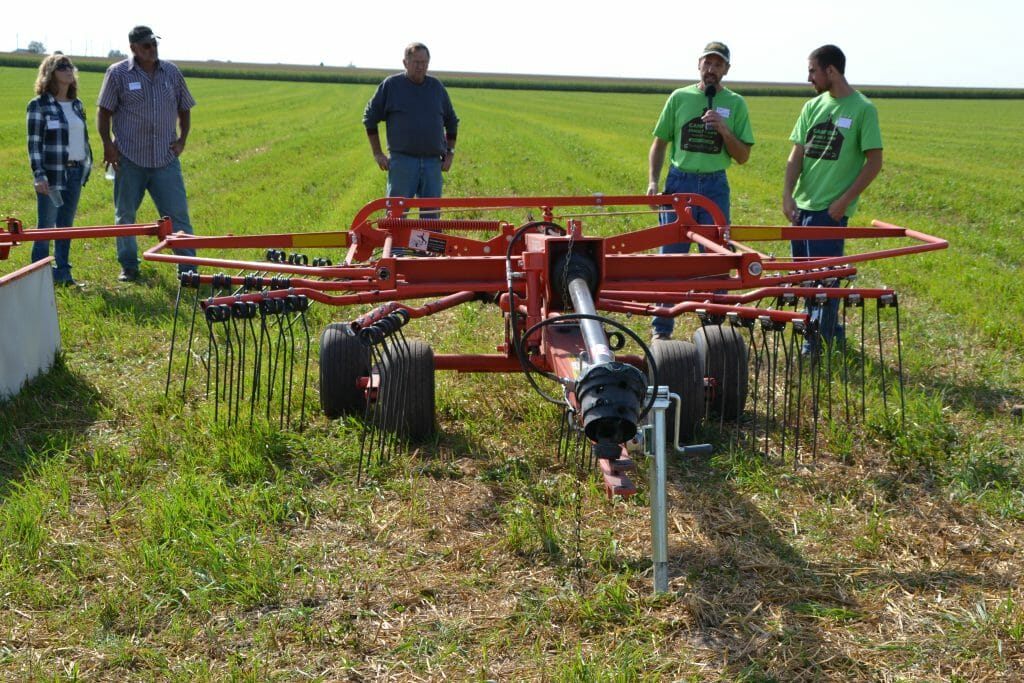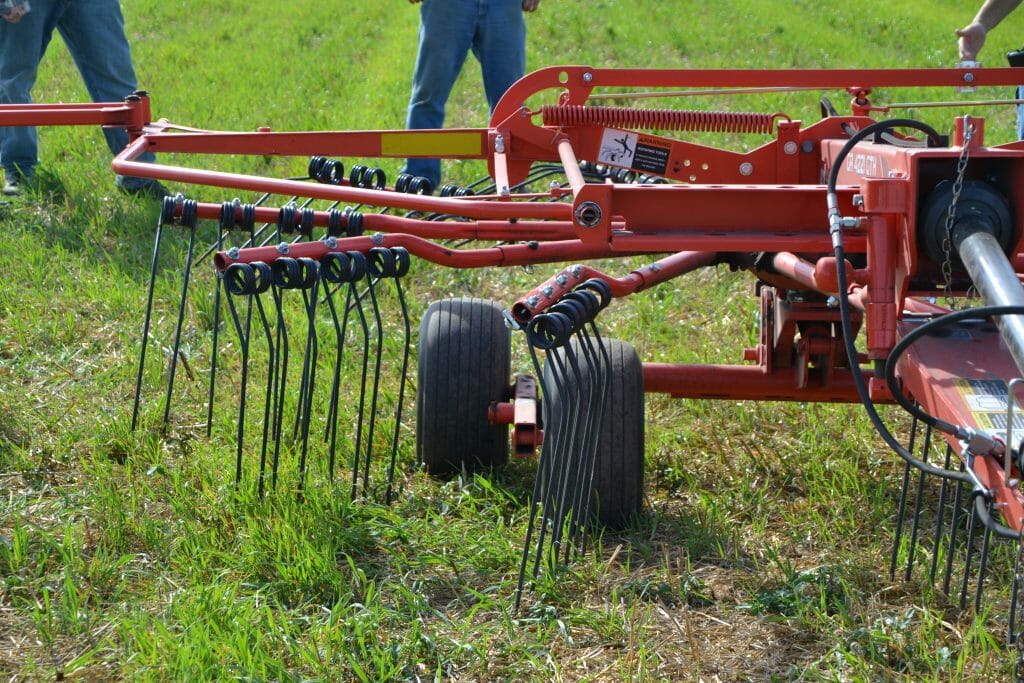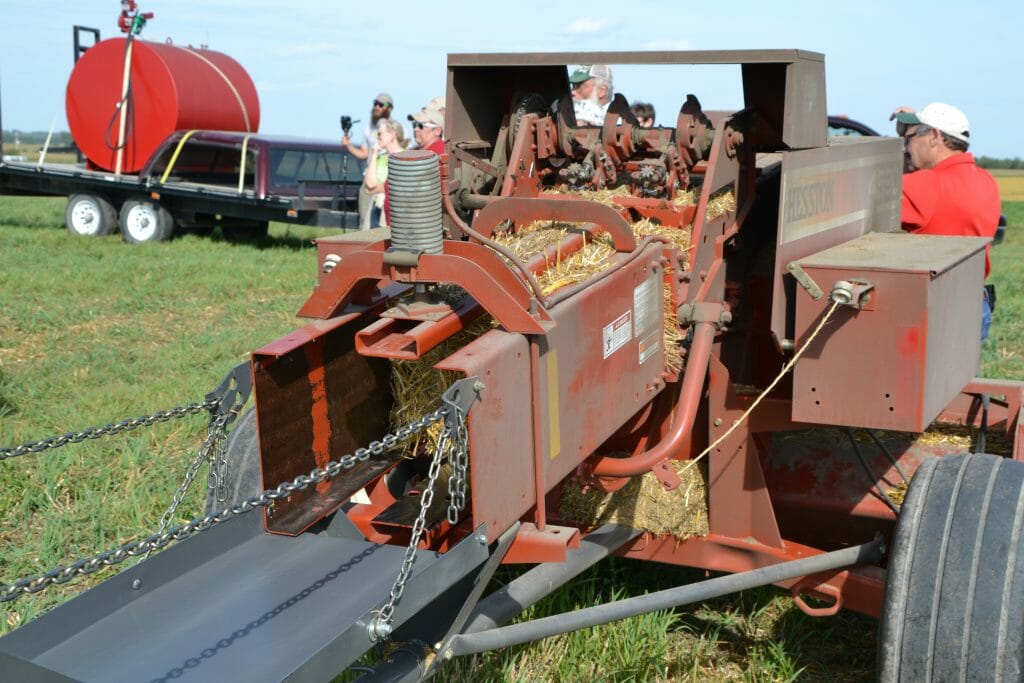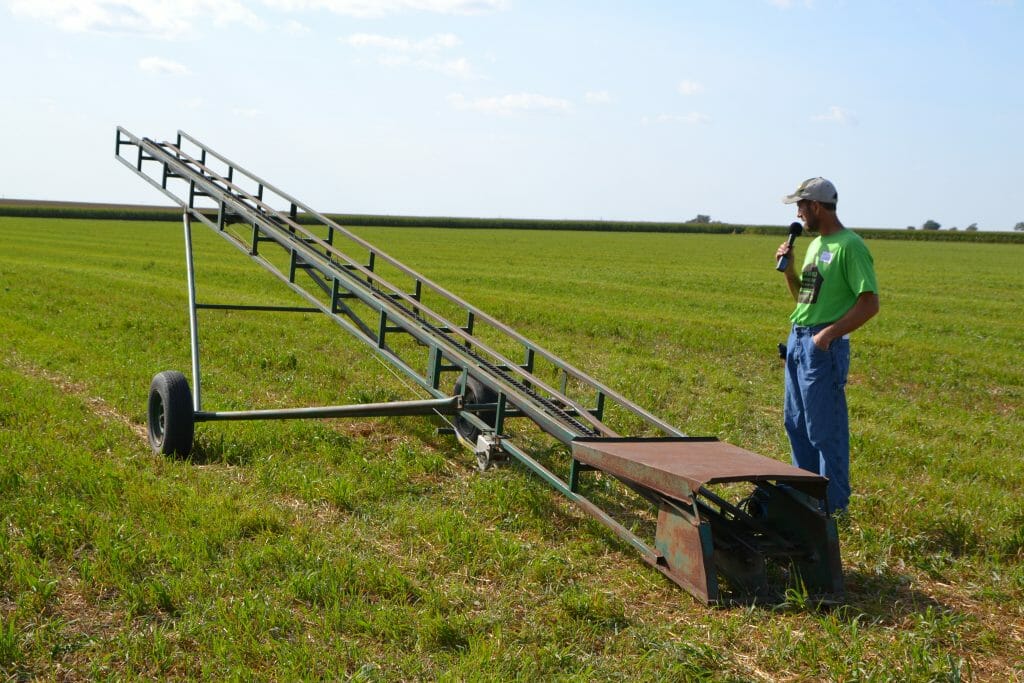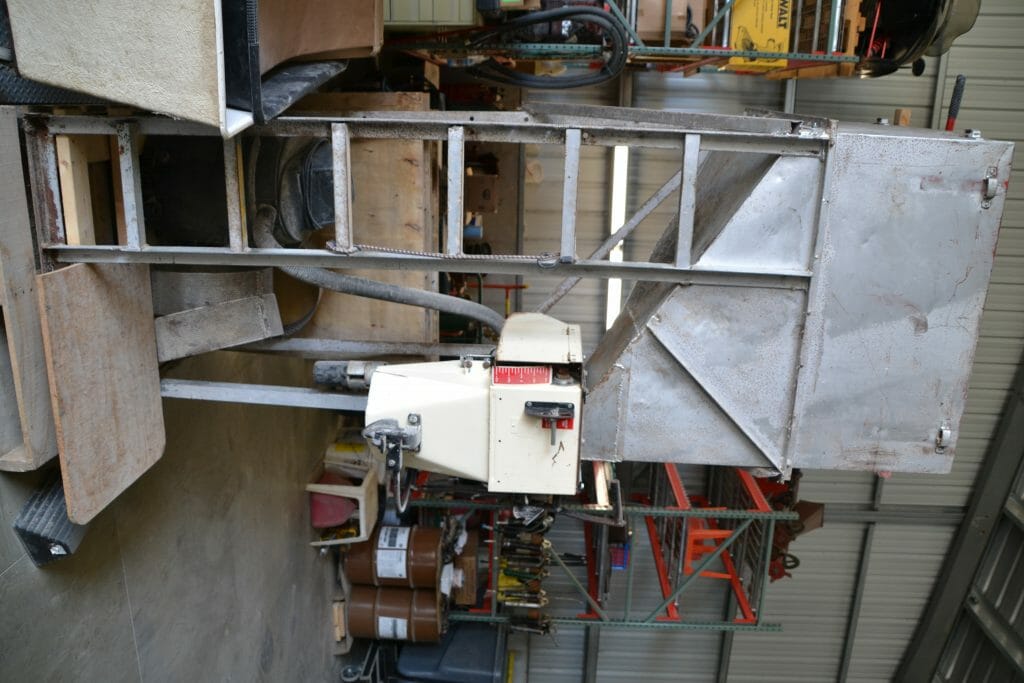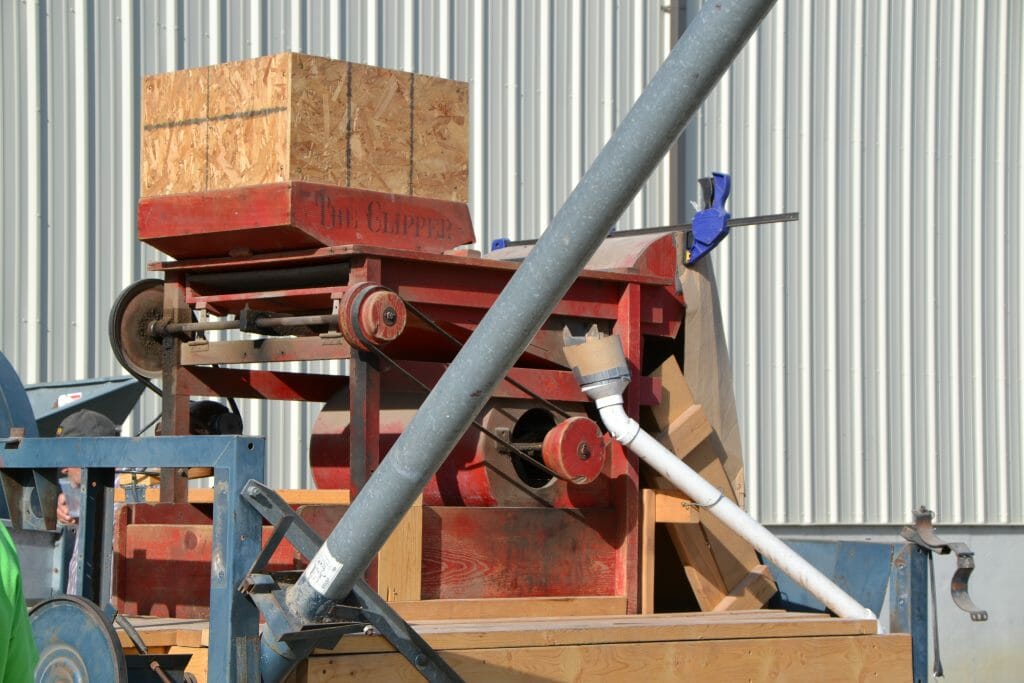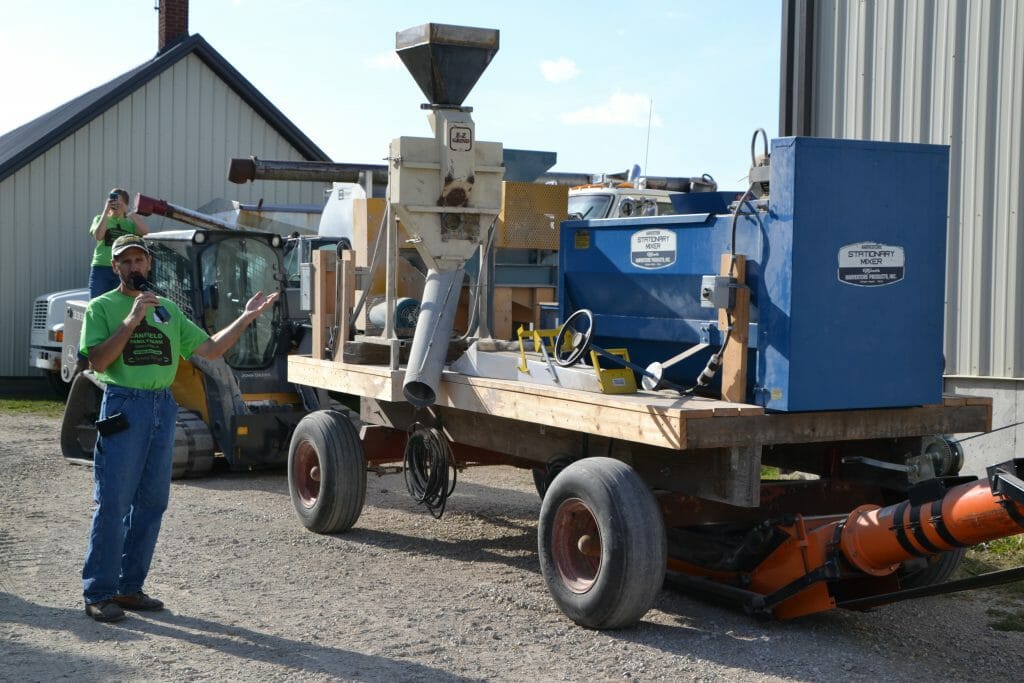Field Day Recap: Oat, Hay and Feed Production and Direct-Marketing
On September 7th, the Canfield family hosted a field day on their farm near Dunkerton in northeast Iowa. A few years ago, the Canfields decided to make a big change on their farm: they shifted from producing conventional corn and soybeans for the commodity market to raising non-GMO corn and soybeans along with oats and hay. They also started an on-farm feed business and direct-market much of what they raise through that business.
The Canfield farm has been around a long time. I interviewed Earl for our video series on small grains production, Rotationally Raised, that we released on YouTube earlier this year. Before we started the interview, Earl ran inside and changed into a shirt the family had made last year in honor of the designation of their farm as a Heritage Farm – meaning it had been around for 150 years. The family proudly wears these shirts at any event related to their farm, and keeping it going for generations into the future is clearly a big reason they do what they do.
“The way we’re farming now, it’s been a wonderful thing for our family. When we were just raising corn and soybeans, the opportunities for our kids to get involved was very limited,” Earl says. He says now, the kids are all directly involved with the day-to-day operations of the business. “We are trying to create some new, viable business opportunities for my children and my grandchildren and however many generations we are privileged to have on this land.”
“I feel better about farming than I have in my life,” Earl says, “doing the things we’re doing now, learning how to do new things. And of course, a lot of what we’re doing, it’s not really new. My grandfather’s generation, what you see here was really common on farms all over Iowa.”
He thinks that if we had more diversity on the landscape, everyone would benefit: “I think if more, little, nobody farmers like us could find a way to do this type of thing all over the state of Iowa and all over the Midwest, it could open up a whole new way of doing business that would benefit everybody,” he says, “then you could have farms everywhere that have got a healthy mix of crops growing thats better for the land, better for the water, better for the air, and just better for the economy. I see a lot of pluses and very few negatives there.”
For people like him to be successful, he thinks that farmers are going to need to get better at direct marketing their products, but its worth the while. “We have to find more people willing to think differently and act on it, but we need customers. We need farmers that are willing to talk to and engage the customers. We do that all the time on our farm here, and the rewards are immense.”
Oat Production
“Three years ago, if you would have looked at the equipment line-up on our farm, it was all geared at producing one thing: corn and soybeans,” Earl says. “All the equipment we owned, that’s all it was good for, just raising row crops.”
One of the barriers to adding small grains and hay to a row-crop operation is finding the equipment. You can find big equipment, and that works if you have a larger operation, but Earl farms around 300 acres, and has around 40 acres of oats on any given year. He says a smaller, pull-type swather is a good example of that. “A swather is a good tool to have, but they’re really hard to find. Maybe if enough farmers start raising small grains in Iowa that will change. I don’t see John Deere or anyone else lining up to start selling these in Iowa yet. But maybe we can be part of something new there.”
One thing Earl likes about small grains are that they spread out the workload on the farm. “It’s really nice going into the fall that the entire farm doesn’t have to be combined between the first of October and the first of November. It’s nice to get some of the work done in the summer when the weather’s warm and nice.” It spreads the planting load out too, because you’re planting a month or more before corn and soybeans; both of these things mean you can get by with a smaller planter and a smaller combine. “It just makes your life a little easier, a little less stressful,” he says.
While there is some new equipment that’s helpful to have, other equipment just requires you to know how to use it in a different way. “Other than getting this [pickup] head, I didn’t have to do anything different to this combine. All the settings for harvesting these small grains are right in the operating manual,” he says, “We’ve just learned how to use it.”
Of course, there are lessons to be learned. He has a 1992 John Deere 9400, which is a conventional combine with a cylinder and beater. The first year he combined oats, he had some problems with plugging. “We were just plugging up something fierce. I remember the first time it happened, it just killed the combine instantly,” he says. They realized the separator was plugged and Earl looked up in the operator’s manual to see if there was anything they could do except for to keep digging it out. “Turns out there are two positions for that beater. You can drop the beater down and open the throat up a little more. It might plug once in a while, but you can always get the plug out without opening the combine up and getting the plug out by hand.”
Hay Production
“Like oat harvesting equipment, not a lot of hay harvesting equipment to be found, especially if you want to make small square bales,” Earl says. And, he is interested in producing quality hay. In his case, he’s not producing a commodity, he’s selling in small volumes to individual people, and that means that quality is very important. The tools he has reflect that. Last year was the first year he direct marketed large amounts of hay, and he’s been scouring the internet, Craig’s list and auctions around the Midwest, and has put together the basics. For a mower, he went with a 2011 New Holland H7230. His first hay crop he had custom harvested with two different mowers, one with a sickle mower and one with a disc mower like the New Holland, and he decided he needed a disc mower for harvesting lush hay.
In addition, he also bought a tedding machine – for being able to fluff up wet hay, or even to cut down drying time on newly cut hay – and a rotary rake. “One nice thing about a rotary rake like this is that you can manage the tine height so it’s just above the dirt but it’s getting all the hay, then you’re not getting dirt and corn stalks up in your hay. It allows you to keep it clean, and it’s fairly gentle, so you can gather hay that’s in a windrow and still maintain many of the leaves, and most of the quality of the hay.”
For a baler, he bought a Heston in-line baler. “I’m really glad we bought this, it makes really nice solid square bales that don’t easily mushroom on you and go out of shape,” he says. He also found a hay rack with bale thrower racks with an automatic conveyor. “I didn’t want to get a baler that had a bale thrower on it, but we thought it might not be a bad idea to have a fence around it if we were going to be having our kids helping out once in a while,” he says, “Safety is a good thing and we think a lot about that.” In addition to the rack, he found a 40 foot long hay conveyor. “If you’re going to make a stack of hay any taller than your hayrack, you need to have one of these,” he says.
“These tools allow you to work with the weather, it gives us a lot of flexibility, we’ve found. They’ve been well worth the money we have in them,” Earl says about the hay equipment.
Direct Marketing and On-Farm Feed Business
He said that as he started selling bags of oats and corn, customers started asking for feed. Right after they launched the website, advertising that they could bagged grain, a customer called and said that she would like to buy feed for her sheep, horses and chickens. She came out to the Canfield’s farm, visited with them, and said that if they started a feed business, she’d buy from them. In turned out that there were many more customers who felt the same way. The Canfields spent the next few months promoting their business. “If we were going on a trip somewhere, coming back, we stopped at every convenience store between here and there to hang up a bunch of cards on their bulletin boards, that’s kind of how it started,” Jane Canfield says.
They don’t do medicated feed or use preservatives, so they are essentially making all “mill to order” feeds. “We don’t grind feed and let it sit on the shelf for six months, we work with people,” Earl says. It’s less of a hassle, but that more natural product – a “marriage of non-GMO grains and organic supplements” as Earl calls it, is what their customers want. He says the business is growing, and there’s a lot more out there if they can expand their production capabilities. Because the feed isn’t organic, the Canfields can offer it for a bit cheaper than organic feed, but because it’s locally grown, and uses organic supplements, they can charge a premium. “We’ve got enough customers that come back to us even if we’re not the cheapest thing in town because they know that we’re trying to produce a good quality product and they’re willing to pay for that,” Earl says.
A few of the pieces of equipment they bought to get started.
* 10,000 lb platform scale, legal for trade scale
*Bagging hopper, bagging scale

*10 new pro boxes (great for grabbing 40 or 50 bushels of corn or soybeans, and keeps the mice out, says Earl).
*Clipper fanning mill. Earl and Jane’s sons Matthew and Andrew modified the cleaner to increase the rate at which they can clean seed.
*Roller mill and small hammer mill mounted on a trailer
Jane Canfield says that if you want to make direct marketing work, you have to be willing to invest the time and effort into its success. “The marketing part of it is huge, it’s a lot of work. If you’re not good at, find someone who is that can help you,” she says. She handles all of the branding and design for the farm – business cards, website, fliers, etc, but doesn’t like to spend a lot of time talking on the phone, “So it works out well that he does,” Jane says about Earl. “I couldn’t do any of this without my family,” Earl says, “this is a team effort all the way. I’m just very blessed.”

